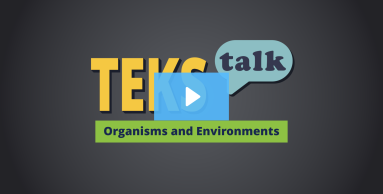- Science
- Grade 1
- Organisms and environments
Science.1.13.C
compare ways that young animals resemble their parents.

Knowledge and Skills Statement
Provide each student with a picture of a different parent animal and its young. Have students observe their pictures to find ways the parent and the young resemble each other. Have students partner up and take turns listening and sharing about their animals and how they resembles the parent, giving a high-five to each other for each similarity. Have students glue their pictures in their notebooks and record ways young animals resemble their parents from their partner conversations.
Some examples of similarities that students might notice include body shape, number of limbs, eye placement on the head, and coloration. They may also notice some differences. For example, a kitten may have different color patterns than its mother. If students bring this up, remind them that the animals have two parents and may look like a combination of both parents.
The further explanation is designed to be a resource for educators that helps them better understand the topic their students are learning. Further explanations may be written at a more complex level than would be expected for students at the grade level.
Oftentimes, when younger students think of animals, they think of mammals. Scientifically, the animal kingdom includes other organisms such as insects, fish, and snakes. As an educator, it is important to consider introducing students to a variety of animals that resemble their parents. For example, students may notice that a young praying mantis has the same head and body shape and color as a parent praying mantis.
In grade 1, students compare animals that resemble their parents, such as rabbits, catfish, or praying mantises. In grade 2, students will study animals that do not resemble their parents, such as butterflies, ladybugs, and frogs. In grade 3, students will be expected to compare animal and plant life cycles.
Research
Bobrowsky, Matt. “Science 101 Q: Which Came First - the Chicken or the Egg?” Science and Children 58, no. 6 (July/August 2021): 65–67. National Science Teachers Association. www.nsta.org/science-and-children/science-and-children-julyaugust-2021-0/q-which-came-first-chicken-or-egg.
Summary: Students can observe the different variations between types of plants and animals. Many animals in the same species resemble their parents but are usually not identical. It is important to use age-appropriate vocabulary in a student's learning stage. Students should compare animals of the same species and look for similarities and differences. Ask students questions like, "Why are they different?" and "What causes them to be alike?" These characteristics are inherited by the offspring, causing them to look similar.
